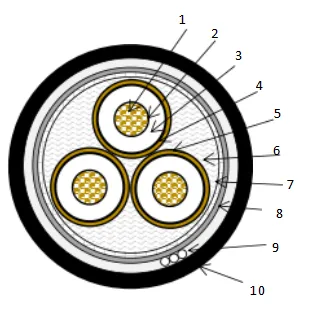9 月 . 28, 2024 19:17 Back to list
Electric Gate Valve Actuators for Enhanced Control and Efficiency in Fluid Management Systems
Electric Gate Valve Actuators An Overview
Electric gate valve actuators are essential components in various industrial applications, providing automation and control for fluid management systems. These devices enable the operation of gate valves through electric power, eliminating the need for manual intervention and enhancing efficiency in processes where precise flow control is necessary.
A gate valve is designed to either allow or block the flow of fluid in a pipeline. It operates by lifting a rectangular or circular gate out of the path of the fluid. This design allows for minimal pressure drop, making gate valves a preferred choice in applications where a straight-line flow of fluid is desired. However, the actuation mechanism to operate these valves is equally critical in ensuring their performance. This is where electric gate valve actuators come into play.
Electric actuators use electrical energy to create mechanical movement, enabling them to open or close gate valves smoothly. There are various types of electric actuators available in the market today, including rotary and linear actuators. Rotary actuators convert electrical energy into rotational motion, while linear actuators create linear movement, making them suitable for different types of valve configurations.
One of the main advantages of electric gate valve actuators is their ability to integrate with existing automation systems. With the rise of Industry 4.0 and increased focus on smart manufacturing, these actuators can be easily connected to control systems, enabling remote operation, monitoring, and diagnostics. This integration enhances operational efficiency, reduces the likelihood of operator errors, and allows for real-time data collection, which can be crucial for maintenance and optimization.
electric gate valve actuators

Furthermore, electric actuators are known for their precision. Unlike pneumatic or hydraulic actuators, which rely on pressurized fluids, electric actuators offer more accurate positioning and control. This precision is particularly important in applications requiring precise flow rates and pressures, such as in chemical processing, water treatment, and oil and gas industries.
Electric gate valve actuators also provide heightened safety features. Many models come equipped with built-in feedback systems that allow operators to monitor the valve position and performance continuously. In addition, in case of a power failure, certain electric actuators can be fitted with a fail-safe mechanism that ensures the valve returns to a predetermined safe position, preventing potential hazards.
However, it is essential to consider some challenges when utilizing electric actuators. They require a stable electrical supply, which might be a limitation in certain locations. Furthermore, environmental factors such as temperature variations and exposure to moisture can affect their performances, necessitating the installation of protective enclosures.
In summary, electric gate valve actuators play a pivotal role in modern industrial controls, offering advantages such as automation, precision, and safety. Their ability to seamlessly integrate into existing systems and provide reliable valve operation makes them an invaluable asset in various sectors. As technology continues to evolve, we can expect further advancements in electric actuator technology, potentially offering even greater efficiency, adaptability, and reliability in fluid management processes. Whether in manufacturing plants, water treatment facilities, or oil refineries, the implementation of electric gate valve actuators will likely remain a cornerstone of efficient and safe operations.
Share
-
Understanding the Differences Between Wafer Type Butterfly Valve and Lugged Butterfly ValveNewsOct.25,2024
-
The Efficiency of Wafer Type Butterfly Valve and Lugged Butterfly ValveNewsOct.25,2024
-
The Ultimate Guide to Industrial Swing Check Valve: Performance, Installation, and MaintenanceNewsOct.25,2024
-
Superior Performance with Industrial Swing Check Valve: The Essential Valve for Any SystemNewsOct.25,2024
-
Industrial Swing Check Valve: The Ideal Solution for Flow ControlNewsOct.25,2024
-
You Need to Know About Industrial Swing Check Valve: Functionality, Scope, and PerformanceNewsOct.25,2024